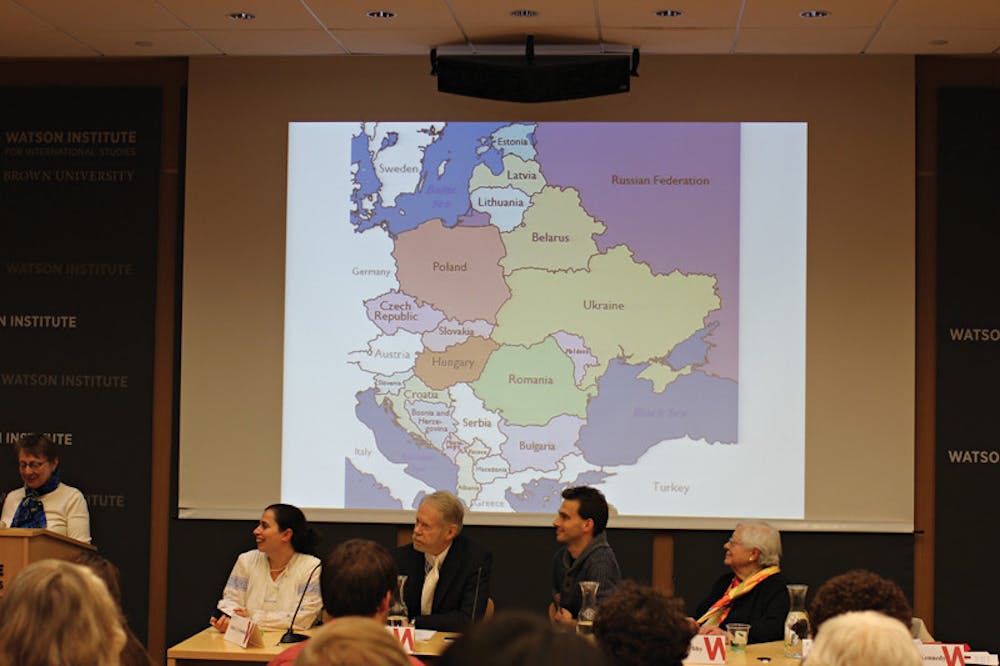“For the students from Brown who are in this room, this is the most serious international crisis that you will experience in your lifetime,” said Robert Legvold, professor emeritus of political science at Columbia. “More than Tahir, more than Tunisia, more than Syria, more than the risk of Iran with nuclear weapons.”
In Wednesday night’s teach-in “Making Sense of Events in Ukraine,” faculty members and Eastern Europe experts discussed the roots of the crisis, the relevant political, social and economic interests of Russia, Ukraine and the West as well as the political history of Ukraine’s Crimea region. Co-sponsored by the Janus Forum, the event took place in the Watson Institute for International Studies.
Ukraine has experienced a series of popular protests and violence initiated by popular opposition to then-President Viktor Yanukovych’s November decision to pull out of a trade agreement with the European Union. The conflict has since evolved into a crisis of power resulting in Yanukovych’s removal from office and reported accounts of violence and human rights violations against protestors.
Professor of Computer Science Anna Lysyanskaya, originally from Ukraine, began the teach-in by presenting a historical timeline of events contributing to the crisis — starting with Ukraine’s independence following the collapse of the Soviet Union in 1991 up to the occupation of Crimea, a predominantly Russian-speaking region of Ukraine, by soldiers wearing unmarked uniforms this past weekend.
The importance of Crimea to Ukraine lies in its access to the Black Sea, its economic assets — including agriculture, viticulture and fracking prospects — and its historical and cultural value to Ukraine, said Patricia Herlihy, professor emerita of history.
Herlihy cited the population’s ethnic Russian majority and its potential as “an outdoor museum of patriotism” as two of Russia’s interests in the region.
Ukraine’s access to the Black Sea through Sevastopol as well as its gas lines, which carry resources to Europe represent strong economic and military reasons for Russia to want to control Ukrainian terrority, said Professor of Political Science Linda Cook.
“Many people would say that Ukrainian west and center love Euromaidan and the Russian-speaking regions of the south and east hated it. Not only is that crappy social science but crude ideological propaganda,” said Michael Kennedy, professor of sociology and international studies. “This whole rhetoric that we use to identify region and language with identity is profoundly wrong,” he added.
Founder of the Soma Foundation for Political Freedom Roman Torgovitsky shared footage of interviews from his trip to Ukraine in early February. He also spoke of the brutality of the Ukrainian special police force in dispersing protesters.
After members of the panel spoke, there was a period for audience members to ask panelists questions. The Joukowsky Forum was filled, forcing some to watch from several overflow rooms that live-streamed the event.
A previous version of this article incorrectly stated that Professor of Computer Science Anna Lysyanskaya is a Ukrainian citizen. In fact, she became a U.S. citizen in 2000. The Herald regrets the error.

ADVERTISEMENT




